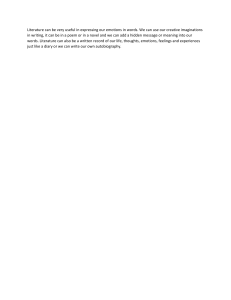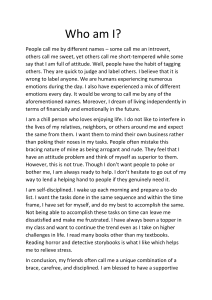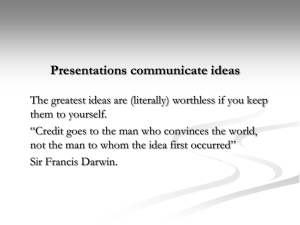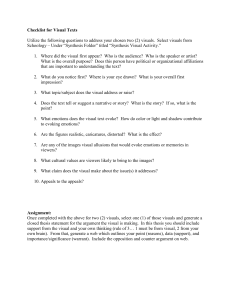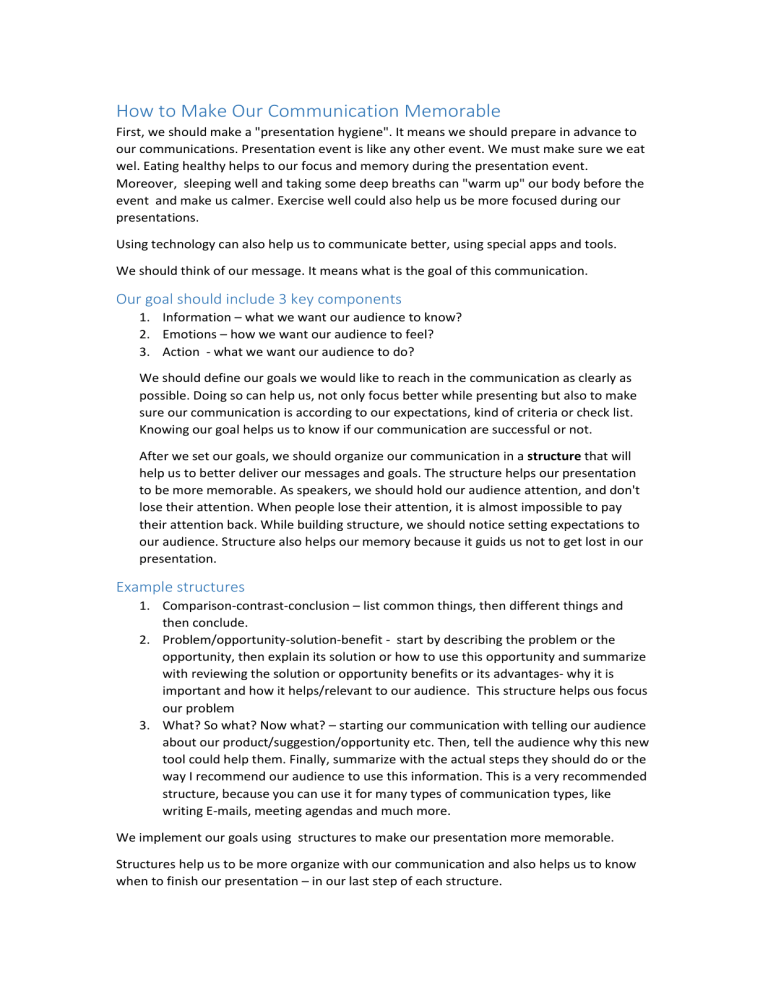
How to Make Our Communication Memorable First, we should make a "presentation hygiene". It means we should prepare in advance to our communications. Presentation event is like any other event. We must make sure we eat wel. Eating healthy helps to our focus and memory during the presentation event. Moreover, sleeping well and taking some deep breaths can "warm up" our body before the event and make us calmer. Exercise well could also help us be more focused during our presentations. Using technology can also help us to communicate better, using special apps and tools. We should think of our message. It means what is the goal of this communication. Our goal should include 3 key components 1. Information – what we want our audience to know? 2. Emotions – how we want our audience to feel? 3. Action - what we want our audience to do? We should define our goals we would like to reach in the communication as clearly as possible. Doing so can help us, not only focus better while presenting but also to make sure our communication is according to our expectations, kind of criteria or check list. Knowing our goal helps us to know if our communication are successful or not. After we set our goals, we should organize our communication in a structure that will help us to better deliver our messages and goals. The structure helps our presentation to be more memorable. As speakers, we should hold our audience attention, and don't lose their attention. When people lose their attention, it is almost impossible to pay their attention back. While building structure, we should notice setting expectations to our audience. Structure also helps our memory because it guids us not to get lost in our presentation. Example structures 1. Comparison-contrast-conclusion – list common things, then different things and then conclude. 2. Problem/opportunity-solution-benefit - start by describing the problem or the opportunity, then explain its solution or how to use this opportunity and summarize with reviewing the solution or opportunity benefits or its advantages- why it is important and how it helps/relevant to our audience. This structure helps ous focus our problem 3. What? So what? Now what? – starting our communication with telling our audience about our product/suggestion/opportunity etc. Then, tell the audience why this new tool could help them. Finally, summarize with the actual steps they should do or the way I recommend our audience to use this information. This is a very recommended structure, because you can use it for many types of communication types, like writing E-mails, meeting agendas and much more. We implement our goals using structures to make our presentation more memorable. Structures help us to be more organize with our communication and also helps us to know when to finish our presentation – in our last step of each structure. Practice communication Just stand and speak. We should demonstrate speaking and not just looking at our agenda or slides. In addition, standing helps us to be more focused while we speak. If we plan to do a virtual presentation we can just stand and turn on our camera. Second, before speaking we must do a vocal warm up. We can warn up our voice before entering the room of the presentation. Our memory doesn't work well when we are stress. This is why we should know the material in advance. We can do it using "chunks". Chunks are pieces of information that help us to memorize better and navigate what we have to say. It's like dividing our presentation into categories. For example, "beginning, middle and an ending". We can change the order while practicing in order to train our brain. If we practice in the same place or time or a similar situation, it could help us perform better. Learning in a noisy atmosphere doesn't help you to deal with testing in quieter spaces. What to do when we forget what we have to say? First, repeat the last sentence or the last idea you have spoken about. It can help us recall the missing information and to focus. We must avoid thinking about the future in those situations. If it doesn't work, we can pause and ask the audience a question regarding the last Idea we have presented. How to help our audience remember our message better? Variation First, we can use vocal variation. Variety in our voice makes our audience much more focused and awake for all our presentation. Being monotone is very boring and can cause the audience to fall asleep. How can we practice making variety in our voice? – we can record ourselves and check if we have enough variation in our voice. If not, we can use "big words" to describe our ideas. For example, "it is a very big challenge" . we should practice exaggerate our speaking while saying ordinary ideas. Variation in our voice means different intonation depending the context of what we say. We can also use different materials or evidence to make our audience believe to us. First, we can use data. When we use data, we must attach it to a context. We can also use examples, case studies, recommendations of others and much more. We should use those evidence it variety. We should use several types of evidence in a pitch in order to make it "stronger" and let all participants believe us. We can also variate the visuals we use in our presentations. Using different images and visuals will engage our audience and will make them less bored. Relevance We should make sure the content of our pitch is relevant enough to our audience. We must scan who listen to us, who is in the room or reads our messages. Then, we should tailor the our content according to their needs. We should work hard to change our content according to the audience we work with. First, we must consider what our audience already knows about the subject we should talk about. And should indicate their level of knowledge. We should check in advance the level of our audience and then change our content accordingly. We should also know what our audience expects for us. Moreover, it will be helpful for us to know the attitude of our audience to the subject that we are talking about. We can change the structure and the order of any structure based on our audience. Considering these factors could help our audience remember our messages better. Promoting engagement Physical engagement - make our audience do something. We can do this by asking the audience some questions, posting links and require them to enter, asking people to write answers in the ZOOM chat etc. all of these could make our audience more involved during our presentations. Mental engagement – cause people to think. For example, by saying "imagine this …". Researchers have found that doing so helps our audience rmember our message better. We can also use analogies. using emotions to deliver messages bring emotion to your speech. Talk with passion. In order to say things in a more exciting way, we can imagine the last time we were excited. If we fill emotions while we talk, It will be easier for us to tell it. We should find how to express emotion even in challenging topics. Combining emotions in our speaking can help our audience remember our message and be more engaged. How to improve our communication? 1. Repetition – we should speak and find more and more opportunities to speak. Practice makes it better. 2. Reflecting – we should check after each pitch what worked and what didn't work. 3. Feedback – look for other people that you trust and ask them for their honest feedback. All of these can help us to improve. FOR MORE INFORMATIION AND VIDEOS GO TO: https://nofreakingspeaking.com/

